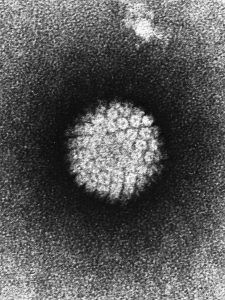The United States Congress designated January as Cervical Health Awareness Month.

Of all cancers that affect women, cervical cancer is one of the most preventable. The human papillomavirus (HPV) causes cervical cancer and other cancers and health departments are advising women to get PAP smears and for young women.men and boys/girls to get the HPV vaccine.
According to the Centers for Disease Control and Prevention, every year more than 12,000 women get cervical cancer and 4,000 die from the disease across the country.
In Maryland, health officials note that in 2015, an estimated 230 women in Maryland will be told that they have cervical cancer. Seventy-three Maryland women will die from the disease this year.
“There is a great opportunity in Maryland to prevent even more cervical cancer diagnoses each year, by increasing cancer screening and HPV vaccination rates,” said Dr. Laura Herrera Scott, Acting Secretary of the Maryland Department of Health and Mental Hygiene. “HPV vaccinations amount to cancer prevention.”
The Wyoming Department of Health says most cervical cancers are caused by a common virus called humanpapilloma virus (HPV). HPV is spread through sexual contact and can cause an infection in the cervix. HPV infection can change cervix cells into pre-cancer cells. “Sometimes if these pre-cancer cells aren’t found and treated, the pre-cancer cells can turn into cancer,” Padilla said.
Denise Padilla, professional development and outreach coordinator with the WDH Breast and Cervical Cancer Early Detection Program noted as many as 93 percent of cervical cancer deaths could be prevented through a combination of screening and vaccinations that can help prevent HPV infections. The HPV vaccine is a three-dose series and is recommended for 11 and 12 year old girls and boys. Vaccination is also recommended for 13 through 26 year old females and 13 through 21 year old males who have not completed the vaccination series. Males aged 22 through 26 years may also be vaccinated. Vaccination is also routinely recommended for both men who have sex with men and immunocompromised persons aged 22 through 26 years.
Related: Gardasil 9 gets FDA approval for prevention of nine HPV types
The North Dakota Department of Health (NDDoH) reminds the public that everyone between the ages of 11 and 26 should receive the human papillomavirus (HPV) vaccine for the prevention of cervical and other cancers during National Cervical Cancer Awareness Month in January.
According to Molly Howell, Immunization Program Manager with the NDDoH, every 20 minutes someone in the United States is diagnosed with an HPV-related cancer. Almost all cervical cancer is caused by HPV.
A new vaccine, Gardasil 9®, was recently licensed for use in the United States that will provide protection against 90 percent of all cervical cancers. “It is important to be vaccinated against HPV to prevent the disease and its related cancers,” said Howell. “Anyone not previously vaccinated, even if they are already sexually active, should receive the full three dose series.”
HPV is the most common sexually transmitted infection (STI). HPV is so common that nearly all sexually active men and women get it at some point in their lives. There are many different types of HPV. Some types can cause health problems including genital warts and cancers.
According to the Centers for Disease Control and Prevention, about 79 million Americans are currently infected with HPV. About 14 million people become newly infected each year. HPV is so common that most sexually-active men and women will get at least one type of HPV at some point in their lives.
For more infectious disease news and information, visit and “like” the Infectious Disease News Facebook page


One thought on “Health officials encourage HPV vaccine during Cervical Health Awareness Month”